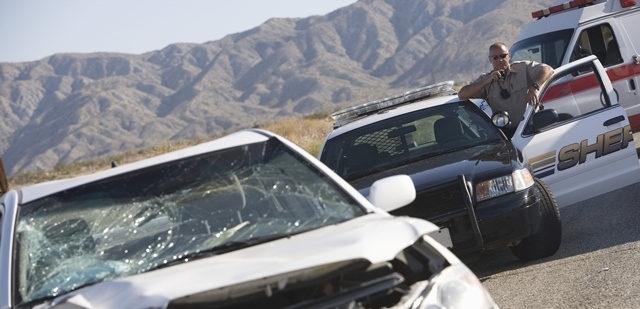Harb v. City of Bakersfield, — Cal.Rptr.3d —-, 15 Cal. Daily Op. Serv. 877, 2015 Daily Journal D.A.R. 1001
A doctor who suffered a stroke while driving and then ran his car onto a sidewalk was arrested and handcuffed by a police officer who assumed he was intoxicated. The first ambulance called to the scene drove away, and it was not until a second ambulance arrived later that the doctor was taken to a hospital for treatment. He then filed suit against the responding officer, the ambulance driver and their employers, alleging that the delay in treatment resulted in permanent brain damage, rendering him unable to care for himself.
At trial the defendants requested an instruction on comparative negligence and argued that the alleged negligent failure of the plaintiff to manage his own high blood pressure was a cause of the accident. Following a jury verdict in favor of the defendants, the plaintiff appealed, asserting inter alia that the trial court erred in instructing the jury on comparative fault, in that any alleged negligence prior to the interaction with the defendants was irrelevant. The appellate court agreed and reversed, holding that, as a matter of first impression in California, the defendants should not have been permitted to argue that the plaintiff’s own alleged neglect of his own high blood pressure rendered him responsible for the harm suffered:
Whether a plaintiff’s preaccident negligence is a type of comparative fault under California law appears to be a question of first impression. We conclude that, where a plaintiff is seeking damages only for the aggravation or enhancement of an injury or condition, California will follow the majority view that a plaintiff’s preaccident conduct cannot constitute comparative negligence when that conduct merely triggers the occasion for aid or medical attention. As a result, defendants who render aid or medical attention cannot reduce their liability for the harm resulting from their tortious acts and omissions by attributing fault to the plaintiff for causing the injury or condition in the first place.
Under the facts of this case, the jury should not have been instructed on comparative negligence and defendants should not have been allowed to argue Harb’s neglect of his high blood pressure was comparative negligence that rendered him responsible for all of the harm suffered. …
California is among those jurisdictions that have adopted the familiar principle of tort law that a “tortfeasor takes the plaintiff as he finds him.” … This basic principle will serve as part of the foundation for the rule of law adopted in this opinion. …
Many other jurisdictions have addressed whether health care professionals sued for medical malpractice can assert a patient’s pretreatment negligence is comparative or contributory negligence. … The courts generally agree that a patient’s conduct prior to seeking medical attention should not be considered in assessing damages. … In contrast, most courts have held that the concept of contributory negligence can be applied to a patient’s conduct that is concurrent or contemporaneous with the physician’s negligence. …
Based on the reasoning set forth in the cases from other jurisdictions, the secondary authorities, and California’s adoption of the basic principle of tort law that a “tortfeasor takes the plaintiff as he finds him” (citation), we conclude the majority rule should be applied in California. Therefore, the issue of a plaintiff’s comparative fault should not be presented to the jury when the plaintiff’s allegedly negligent conduct occurred before the first responders arrived at the scene of the accident.
 RSS
RSS
 Los Angeles
Los Angeles